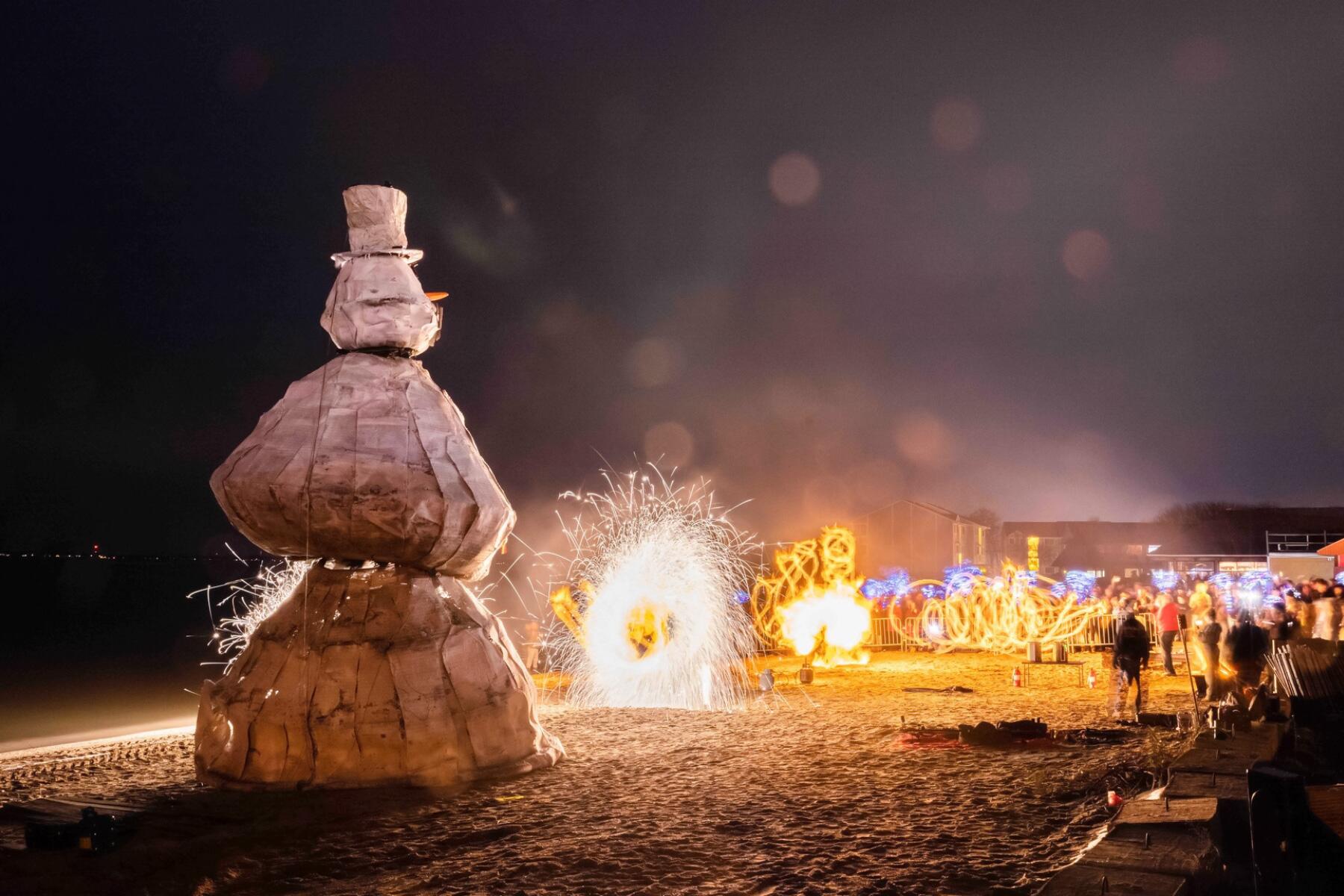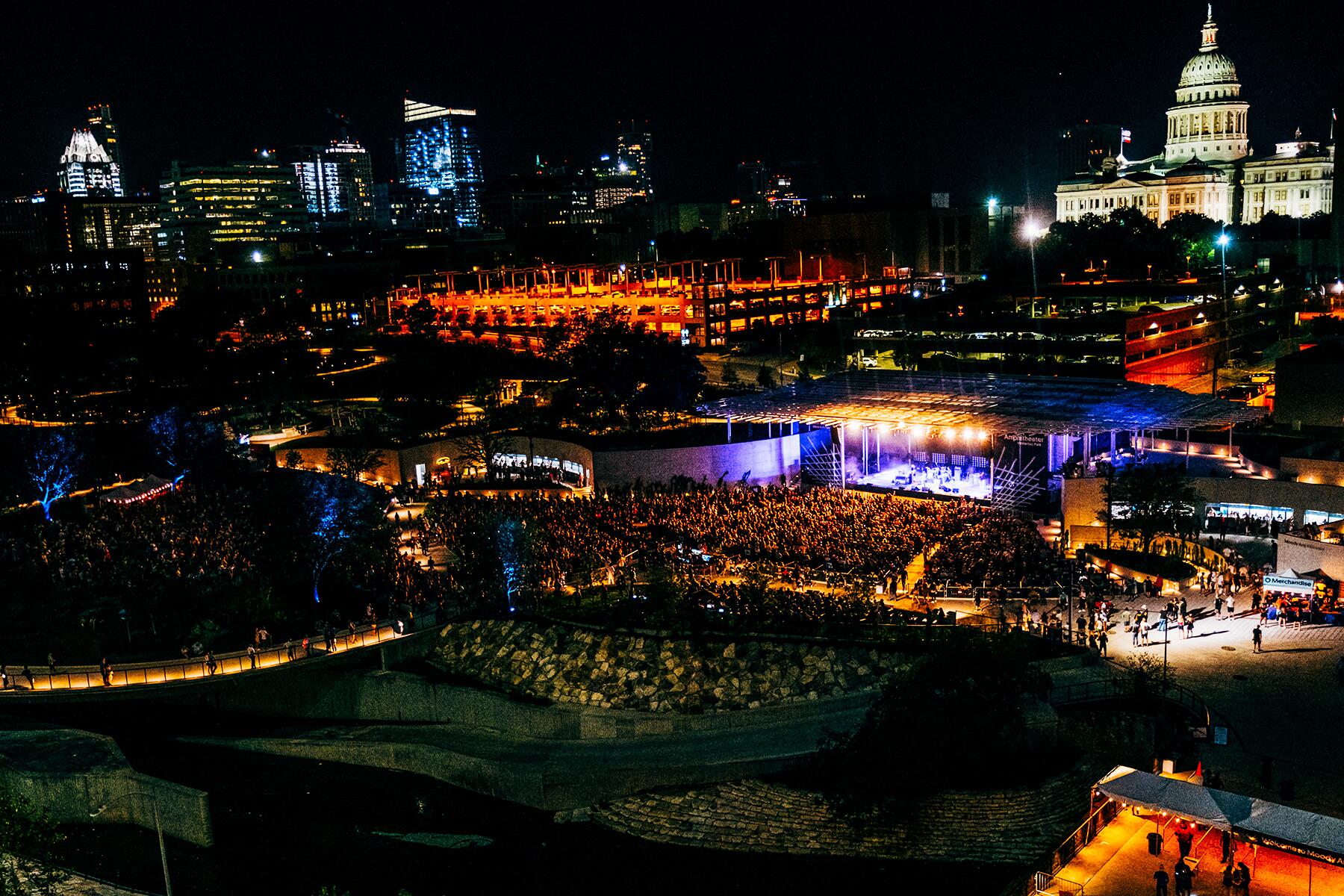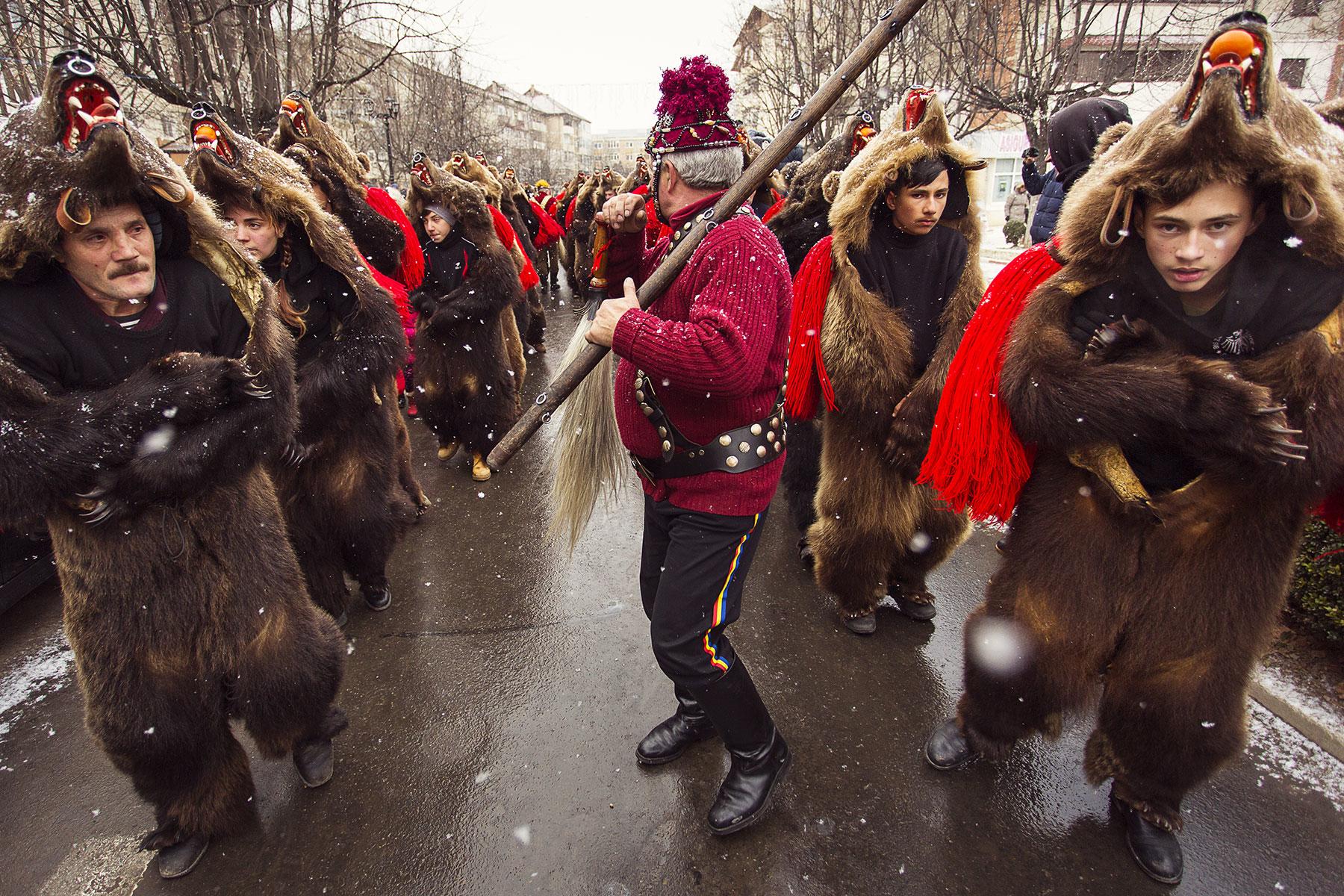- ⁄
- Travel News
- ⁄
- Events •
- Trip Ideas
Eating grapes, wearing polka dots, or burning scarecrows might be weird New Year’s Eve traditions to some, but centuries-old customs to others.
As the old year comes to a close, we have a look at some of the most interesting traditions to welcome the new year. While some customs like popping champagne, fireworks and counting down the last few seconds seem universal, many countries have their own unique ways to celebrate. Follow us around the world with these New Year’s Eve traditions, make a wish, and have a happy new year!
Top Picks for You
Twelve Grapes of Luck
WHERE: Spain
In Spain and some Latin American countries, one New Year’s tradition is to eat 12 grapes, one for each month of the coming year, to secure prosperity. Sounds easy? Here’s the challenge: you need to eat one grape with each bell strike at midnight. The favored way is to take a bite, then swallow the grape halves whole. A glass of bubbly afterward might help to flush it all down. The tradition dates back to 1909 when vine growers in Alicante came up with this idea in order to sell more grapes after an exceptional harvest.
Wear Colorful Undies
WHERE: Mexico
In Latin American countries like Mexico, Bolivia, and Brazil, the color of your panties will determine what kind of year you’ll have, so choose carefully! Tradition holds that red will bring love and romance, and yellow leads to wealth and success. White stands for peace and harmony, while green signifies well-being and nature. In Turkey, red panties are also handed out as gifts for good luck and the promise of a fruitful new year.
Recommended Fodor’s Video
Pouring Lead
WHERE: Germany
Who doesn’t want to know what the next year might bring? In Germany, people melt small pieces of lead in a spoon over a candle, then pour the liquid into cold water. The bizarre shapes from the Bleigießen (lead pouring) are supposed to reveal what the year ahead will bring. If the lead forms a ball, luck will roll one’s way, while the shape of a crown means wealth; a cross signifies death and a star will bring happiness.
Break a Plate (or Two)
WHERE: Denmark
A Danish New Year’s Eve tradition is to throw plates and dishes against friend’s and neighbor’s front doors. It’s a bit of a popularity contest as the bigger the pile of broken china is the next morning, the more friends and good luck you’ll have in the coming year. In times of apartment and urban living though, it’s a dying tradition, but smashing fun for those who still practice it. Another custom in Denmark is the jumping off chairs at midnight, symbolizing the leap into the New Year when the clock strikes 12.
Scarecrow Burning
WHERE: Ecuador
In Ecuador, people build scarecrow-like dolls of politicians, pop stars, or other notable figures to set them alight. Burning the año viejo (old year) is meant to destroy all the bad things from the last year and cleanse for the new. The scarecrows are made from old clothes stuffed with newspaper or sawdust and a mask is fitted at the end. The Ecuadorian tradition possibly originated in Guayaquil in 1895 when a yellow fever epidemic hit the town, and coffins packed with clothes of the deceased were burnt for purification.
Round Food, Round Clothes, Round Everything
WHERE: Philippines
In the Philipines, the start of the new year is all about the money. The locals believe that surrounding themselves with round things (to represent coins) will bring money or fortune. As a result, clothes with polka dots are worn and round food is eaten. To really push Fortuna, coins are kept in pockets and constantly jangled, believed to keep the money flowing.
First Footing
WHERE: Scotland
In Scottish folklore, the “first-foot,” also known as quaaltagh or qualtagh, is the first person crossing the threshold after midnight. A tall, dark-haired male with gifts like coins, coal, bread, salt, and a “wee dram” of whiskey, is thought to bring the best luck for the house. The tradition probably dates back to the Viking days when big, blond strangers (commonly armed with axes and swords) at the door meant trouble, and in some places, first footing by a fair-haired male is still regarded as unlucky.
Tossing Furniture
WHERE: Italy
“Out with the old” is the motto in Naples, where people toss everything from toasters to fridges off their balconies. Getting rid of old possessions symbolizes a fresh start in the new year. To prevent serious injuries, most locals stick to small and soft objects for their throwing tradition, though it’s still a good idea to watch your head should you travel to Naples (or Johannesburg, South Africa, where this custom is also practiced).
Animal Spirits
WHERE: Romania
Romania is a country steeped in tradition. Especially in rural areas, New Year’s Eve highlights include mask dances and ceremonies about death and rebirth. Dancers dress up in furs and wooden masks depicting goats, horses, or bears, then dance from house to house to ward off evil spirits. The dance of the bear is the most popular. According to pre-Christian folklore, if a bearenters somebody’s house, it brings prosperity, health, and good fortune.
Mass Kissing
WHERE: Italy
Venice is a romantic place any time of the year but on New Year’s Eve in Piazza San Marco, tens of thousands of locals and tourists gather for fireworks, a light show (which sees “hearts” raining down), and “a kiss in Venice.” The evening is all about love and your loved ones, so celebrate with a proper smooch and welcome the new year with happiness in your heart.
Potato Drop
WHERE: Idaho
With less tradition but more high-tech, for the fifth year running the people of downtown Boise will welcome the new year by dropping a giant spud from the sky. More than 40,000 spectators turn up to see the internally lit, 400-pound “GlowTato.” Other New Year’s Eve drop-sites in the US include Brasstown, N.C. (a possum), Bethlehem, Penn. (Peep – a 200-pound local marshmallow candy) and Port Clinton, Ohio (a giant fish called Wylie the Walleye).
108 Rings
WHERE: Japan
At midnight, Buddhist temples all over Japan ring their bells 108 times to dispell the 108 evil passions all human beings have, according to Buddhism. Japanese believe that joyanokane, the ringing of the bells, will cleanse them from their sins of the previous year. Traditionally, 107 bells are rung on the last day of the year and the 108th in the new year. Many people eat buckwheat noodles called toshikoshi soba on New Year’s Eve to symbolize the wish for a long life.




